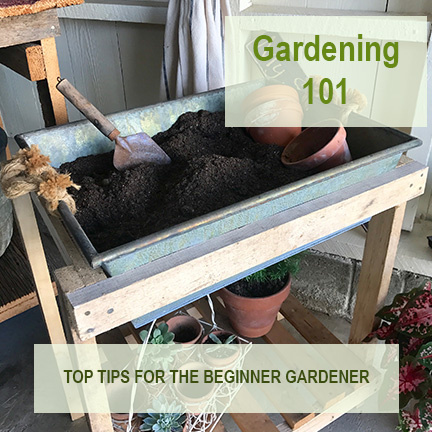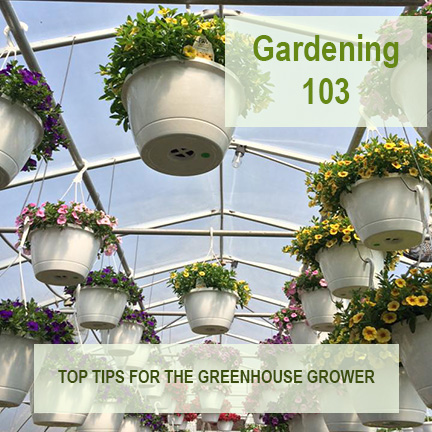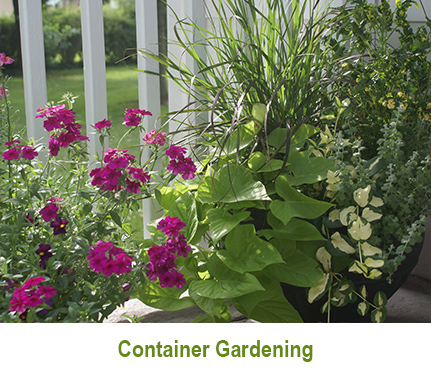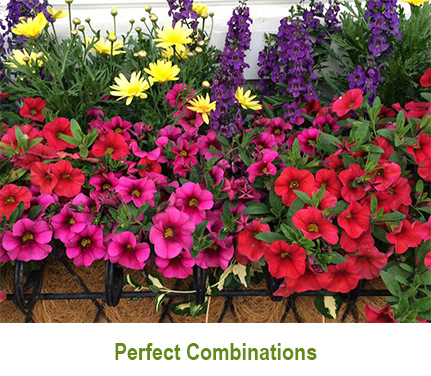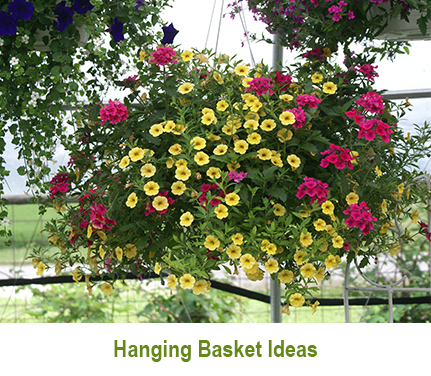Gardening 102
Tips for the everyday gardener
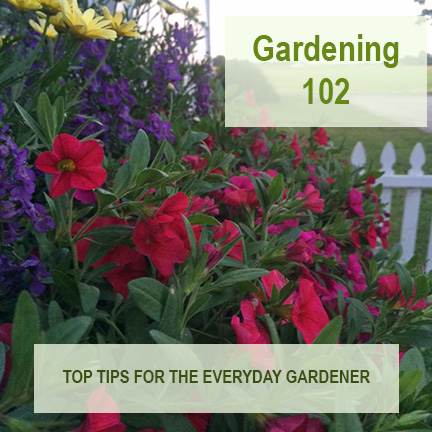 If you are an everyday gardener then you probably already know about the mental and physical health benefits that gardening provides. There are many studies that prove this to be true and I listed some of them in Gardening 101. Gardeners are rewarded with feelings of gradification and bliss. The better you become at gardening, the stronger those feelings will be. Below are tips to help the everyday gardener grow gorgeous quality flowers that last all season. If you are interested in greenhouse growing, you may want to read Gardening 103 -Tips for the greenhouse grower.
If you are an everyday gardener then you probably already know about the mental and physical health benefits that gardening provides. There are many studies that prove this to be true and I listed some of them in Gardening 101. Gardeners are rewarded with feelings of gradification and bliss. The better you become at gardening, the stronger those feelings will be. Below are tips to help the everyday gardener grow gorgeous quality flowers that last all season. If you are interested in greenhouse growing, you may want to read Gardening 103 -Tips for the greenhouse grower.
#1 Wash & sanitize containers before reusing
01 - At the end of each season, clean your containers. Old soil and plant debris left in containers make the perfect place for bacteria, disease and pests to harbor. Organisms can grow in old soil, on the surface of dirty containers and on plant debris. New plants will not perform well and will most likely die.
02 - Use a utility brush, water hose and a bucket of soapy bleach water. Clean containers both inside and outside.
03 - It is always best to start with new coconut liners each season for the very same reasons.
#2 Soil
01 - Always use a good quality potting soil that holds water yet drains well.
02 - Use a light weight soil for starting seeds and a medium weight for containers.
03 - A good fluffy soil will allow water and air to flow through evenly and will help with fertilizer intake by the root system.
04 - Always fill containers with dry soil. If the soil is damp, let it dry out before putting it in containers. The plant is usually still young so the root system can not help absorb all the dampness. Starting with damp soil can create root rot or mold and other diseases. The only time to start with slightly damp soil is when planting seeds. Seeds require contact with damp soil to germinate.
05 - Always remember, top soil is for the ground and potting soil is for containers. Ground soil is thick, heavy and weedy so stay away from putting them in containers.
#3 Location
01 - Gardening 101 talks about reading labels to make sure plants are in the proper location. But now lets throw a few more tips out there!
02 - If a plant requires full sun, it prefers mid to late afternoon shade in the heat of the summer. I always tell my customers that if their plants are getting morning to early afternoon sun and mid to late afernoon shade they will perform better.
03 - A young plant needs adequate amount of sun to promote growth. However, young roots can not survive in too much sun unless watered properly.
04 - When ALL plants become mature (no matter what the label says) they prefer mid to late afternoon shade.
05 - Plants that require sun to part shade, will survive in full sun but the foilage may have a bronze or slightly burnt appearence. If the same plant is located in morning sun and mid afternoon shade, the foilage will be greener and more vibrant.
06 - Plants that require more shade need a few hours of early to mid morning sun to produce more blooms and keep their vibrant color. Watch my short video about "Impatiens" for an example.
07 - To break it down a little, here are some guidelines to follow. Keep in mind that the environment can cause these guidelines to vary.
Full Sun is 6 or more hours of direct sun a day
Partial Sun or Partial Shade is 4 to 6 hours of direct sun a day
Full Shade is less than 4 hours of direct sun a day
#4 Water
01 - Watering can be the most difficult task when it comes to gardening. Just when we think we have it down, mother nature proves us wrong! The number one mistake that most individuals do that kill their plants is improper watering. Many factors must be taken into consideration when it comes to watering such as the following: The size of roots, type of plant, size of containers, environment and forecast.
02 - Seedlings (germinated seeds) need to stay damp. Never let them go dry and don't saturate them. The larger they get the more water they will require.
03 - Young flowers with very little roots will not require as much water as mature flowers with an abundance of roots.
04 - Research your plants to know what amount of water they prefer. Plants such as succulents, tuberous begonias, geraniums, lantana, portulaca and rock soapwort do not require as much water as petunias, calibrachoa, verbena and argyranthemum.
Too much water:
A - Pay attention to the soil and the overall health of your plants. If a plant does not look well and the soil is soggy, take a pencil and poke several air holes in the soil. This will allow air to circulate into the soil and help dry it up. Be sure the plant is located in an area where there is good air circulation or use a fan if needed. Stop watering it until it is mostly dry.
B - Plants love rain water but being exposed to an accessive amout can be detrimental. If able, move it to a dry spot for a while.
C - Another way to help an over watered plant is to remove the wet soil and add new dry soil. Be sure to remove the wet soil from the root area as well as the container.
D - Too much water can cause a plant to develop diseases such as powdery mildews, mold and root rot. This can eventually cause the plant to die.
Signs that a plant has been over watered:
- Soil feels soggy
- Soil develops algae
- Plant is wilting
- Leaves begin to turn yellow or pale
- New leaves turn brown
- Buds are not opening
- Leaves fall off prematurely
- Stems begin to wilt (most likely too late)
Not enough water:
A - Not enough water can also be detrimental to a plant. Plants require wet to dry cycles. This will help avoid fungus and produce a stronger plant. However, most plants don't like to go completley dry or stay dry for too many hours. Finding that perfect amount of water that allows the plant to partially dry out before the next watering is the goal. Knowing this perfect balance comes with trial, error and persistance. Always keep in mind, the larger the plant the more water it requires.
B - We recommend watering in the morning vs evening. Watering in the evening can cause a plant to develop powdery mildew and other diseases. Also, If you water in the evening and don't give it enough water, the soil may be too dry during the hottest part of the following day.
C - Plants that require a lot of water may need to be watered a couple of times a day, especially mid to late summer. Gardeners who water their plants in the morning and check them again mid to late afternoon, will most likely have greater success with their plants.
D - If the soil looks dry or has started cracking or pulling away from the edge of a container then the plant is becoming severly dehydrated. If this happens, the soil will be hard. Break it up a little so the water will obsorb into the soil instead of around the soil and out the drain holes.
E - The environment and location of your plant will determine the amount of water it requires. We all know that the more sun a plant gets, the more water it will require. What many every day gardeners overlook are the rainy days. Just because it is raining does not mean plants under roof do not need watered. We need to make sure the rain is coming down steady enough to properly water exposed plants. A light rain may not get through to the soil of plants with large leaves.
Signs that a plant has been under watered:
- Soil looks light grey and feels dry
- Plant is growing very slowly
- Leaves turn yellow
- Leaves turn brown and crunchy
- Blooms begin to turn brown and crunch
- Plant is wilting
Fertilizing
01 - I can't stess this enough! If you shop at Smiths Country Gardens, chances are you have heard me say it more than once! Soil does not contain enough nutrients for optimum growth. Your plants will absorb the nutrients from the soil very quickly. Even if you start with a soil high in nutrients, you still need to fertilize.
02 - For a plant to be strong, healthy and beautiful, it requires six primary nutrients - oxygen, carbon, hydrogen, nitrogen, phosphorus and potassium.
03 - Plants intake oxygen, carbon and hydrogen from air and water. This leaves soil to provide the nitrogen, phosphorus and potassium. To replinish the nutrients that are lost from the soil, you will need to fertilze.
04 - We recommend that you use a good quality water soluble fertilizer weekly.
05 - Fertilize the soil, not the plant. Fertilizer can sometimes burn the leaves so keep as much off of the plant as possible.
06 - Don't fertilize when the plant is wet. Wet soil will dilute the fertilizer giving the plant less nutrients. Always fertilize when the soil is dry.
07 - Later in the season, when the plants are very mature, you may need to fertilize twice a week.
08 - Don't fertilize seedlings (young plant that has recently germinated) until they have at least two sets of leaves. Most seedlings do not need fertilizer for several weeks.
Deadhead & Cropping
01 - Removing dead blooms and foilage will improve the overall health of a plant and will promote new growth. Leaving dead flowers and foilage on a plant takes nutrients from the rest of the plant.
02 - Usually if the blooms are small they will fall off on their own such as calibrachoa, lobelia, lantana and gold dust. These types of plants will perform very well with no deadheading.
03 - Plants with larger blooms such as agyranthemum, verbena and geraniums require more deadheading in order to promote new growth. If you do not deadhead these types of plants, they will most likely continue to live but will not produce an abundance of blooms.
04 - It has been known that wave petunias do not need deadhead. This is true but the only way to keep them full and gorgeous is to trim a few inches off the stems once they become leggy. Leggy stems do nothing but take energy from the rest of the plant which means less blooms, thiner at the top root area and quite honestly an unatractive plant.
05 - There are several flowering plants that will have a nicer appearance if you crop them a few inches a couple of times throughout the season. Many people do not like to cut off part of their plant. If you are fine with just an okay looking display of flowers, then leave it alone. However, if you want a display of flowers that look healthier, fuller and more vibrant, then we highly reccommend that you follow this step. Your flowers will not only have a better appearance but they will last longer throughout the season.
Contact Us
Copyright Smiths Country Gardens LLC. All rights reserved
- Articles View Hits
- 305731

